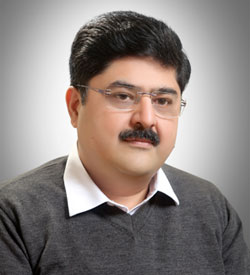Melasma is a common skin problem which causes brown or greyish-brown patches, typically on the face. Most people get such patches on their cheeks, bridge of the nose, forehead, chin, and above the upper lip. Melasma occurs more often in women than in men.
The excess activity of the melanin-forming cells in the skin, that is, the body’s pigment-making melanocytes can result in uneven pigmentation. Though this is a part of the natural aging process, excessive sun damage can also be a reason. Apart from aging, hormonal imbalance and other certain diseases may increase melanin production, leading to dark spots or patches on the skin.
Post-inflammatory hyperpigmentation (PIH) is the damage or irritation to the skin wherein the affected area turns tan, brown, or purple. The term hyperpigmentation itself means more colour.
Skin problems such as acne, burns, eczema, allergic reactions, infection, insect bites, lichen planus, pseudofolliculitis barbae, and psoriasis often result in PIH. Sunlight can further aggravate the condition.
Hence, laser toning can effectively treat and correct such conditions.
In simple words, laser toning is the penetration and fragmentation of skin pigments using laser energy. It is performed using non-ablative lasers where the targeted tissue is heated up without actually destroying it. The Q-switched 1064-nm neodymium-doped yttrium aluminium garnet (QS 1064-nm Nd:YAG) laser is increasingly being used for melasma laser toning. Multiple and frequent low-fluence, and large-spot-size treatments are used to achieve laser toning.
The QS 1064-nm Nd:YAG laser fragments melanin granules, dispersing them into the cytoplasm without causing cellular damage, which results in the clinical improvement of melasma.
On completion of the procedure, excess pigmentation and leftover particles are processed by the body’s immune system to clear away distortion.
Though there is no specific pre-treatment required for laser toning, specialists usually advise their patients to avoid sun exposure a few weeks before the treatment. At the start of the treatment, some dermatologists may apply a topical analgesic or local anaesthetic to reduce discomfort during the procedure. However, most patients do not typically experience substantial pain. Having said that, it is common for the skin to be warm immediately after the procedure.
Most non-ablative laser procedure options last for several sessions typically consisting of four to ten sessions in total. In addition, a patient’s particular skin type and concerns primarily dictate the number of treatments required.
Patients are permitted to engage in regular activities immediately after their laser treatment with the exception of prolonged exposure to the sun. They will also most likely be required to apply a broad-spectrum 30-SPF sunscreen, applied every two hours.

Consultant Dermatologist & Laser Surgeon View Full Profile